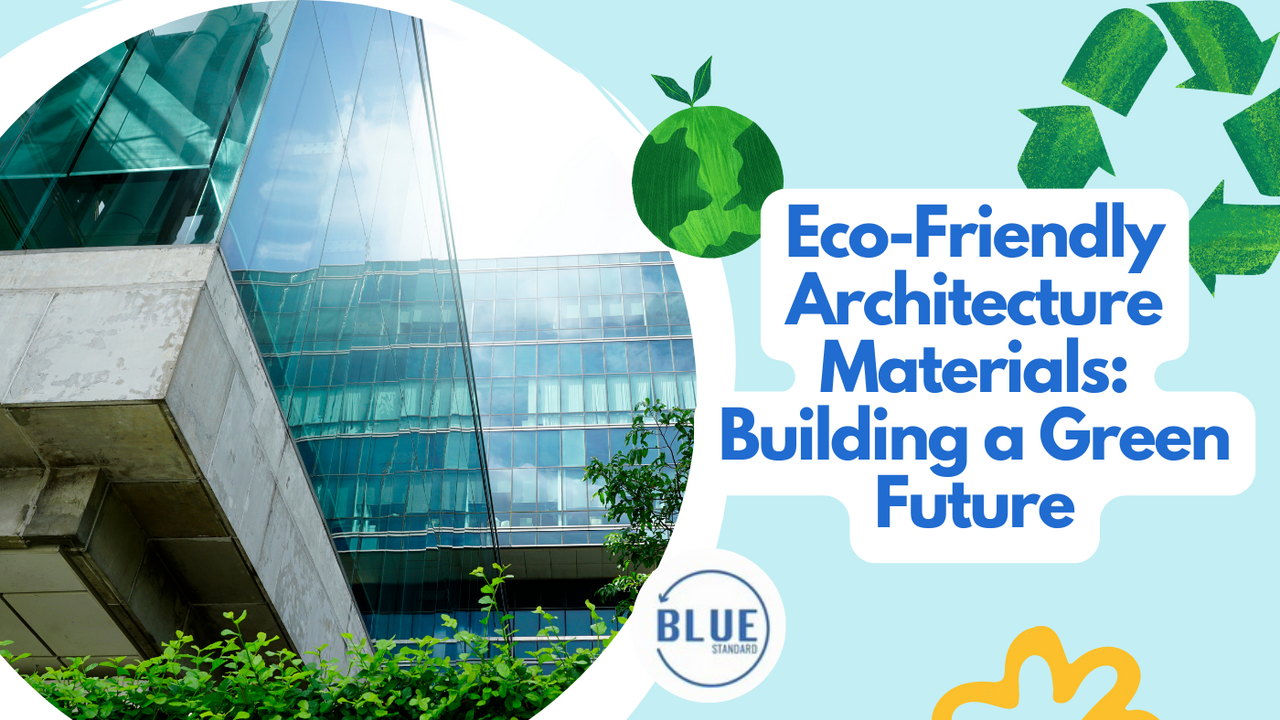
Eco-Friendly Architecture Materials: Building a Green Future
In recent years, awareness about climate change and the importance of sustainability has been on the rise. As a result, more and more people are looking for ways to reduce their carbon footprint and live a more eco-friendly lifestyle.
One of the areas where this has become particularly important is in construction and architecture. The materials used in building and designing structures can significantly impact the environment, from manufacturing and transportation to the longevity and eventual disposal of the materials.
This blog post will explore some sustainable architecture materials to help us build a greener future.
The beauty and benefits of sustainable architecture materials

The world is now more conscious of our impact on the environment, and the field of architecture is no exception. With the increasing demand for environmentally-friendly designs, eco-friendly architecture has emerged as a sustainable option that helps promote sustainable practices while improving the aesthetic value of our surroundings.
This form of architecture merges design and technology to develop sustainable and energy-efficient structures that utilize natural resources in an environmentally-friendly way.
Below are some of the beauty and benefits of sustainable architecture materials:
Energy efficiency
Sustainable architecture improves energy efficiency using natural systems such as passive solar design, natural lighting, and ventilation. This means buildings do not rely on artificial light or air conditioning but instead utilize natural elements to create better energy efficiency. The resulting designs help lower carbon emissions from HVAC systems, conserving energy and saving money on energy bills.
Durability and resilience
Sustainable designs are resilient, weather-resistant, and able to withstand the impact of natural disasters. This is due to using sustainable materials and designs that meet green standards.
Building materials such as bamboo, recycled materials, timber, and other natural products are preferred in eco-friendly architecture. With these materials, structures are strong, durable, and able to withstand heavy rains, gusts of wind, and other elements.
Health and well-being
The use of sustainable architecture in structures has a positive impact on mental and physical well-being. It allows for introducing natural light, ventilation, and organic shapes that help to create a harmonious, soothing, and refreshing atmosphere.
By including plants in the overall building design, eco-friendly building interiors can help improve air quality, lower stress levels, and create a calm and peaceful environment.
Aesthetics
Sustainable architecture has a unique aesthetic quality that emphasizes the relationship between the structure and its surroundings. Designs strive to blend with the environment, ensuring that the building does not detract from the beauty of surrounding areas.
The focus is on creating a beautiful and environmentally friendly design, resulting in attractive structures that enhance the surrounding environment.
5 Sustainable architecture materials

A green future is a living space that minimizes the negative environmental impact by efficiently using energy, water, and other resources. The perfect eco-friendly building site could be a simple country retreat or a modern city dwelling.
One key attribute of eco-friendly architectural materials is that they are renewable and sustainable. Such materials can preserve the environment for future generations while meeting current needs.
Here are some of the most popular sustainable architecture materials that can be used today:
#1 Bamboo
Bamboo is a highly sustainable and renewable resource that has become increasingly popular in architecture. It is firm and durable, making it an excellent material for flooring, exterior cladding, and furniture. Additionally, bamboo grows incredibly quickly and requires minimal fertilization or pesticides.
This makes it a highly sustainable alternative to wood, which can take decades to grow and requires significant chemical inputs.
#2 Recycled materials
Another popular trend in eco-friendly architecture is the use of recycled materials. This can include repurposing materials like shipping containers or reclaimed wood. It can also involve using recycled materials like glass or plastics to create new building materials.
Using recycled materials helps reduce waste and lowers the demand for new materials, which can be resource-intensive.
#3 Rammed earth
Rammed earth is a traditional building material that has grown in popularity recently due to its sustainability. This building method involves compacting layers of soil or clay, which then harden into a strong and durable material.
Rammed earth is incredibly energy-efficient, as it has an excellent thermal mass that helps keep buildings cool in the summer and warm in the winter. Additionally, it requires minimal maintenance and can be easily repurposed or recycled.
#4 Hempcrete
Hempcrete is a relatively new building material gaining popularity due to its sustainability and versatility. It is made from a mixture of hemp fibers, lime, and water, which creates a lightweight and insulating material.
Hempcrete is highly breathable, which helps regulate humidity levels inside buildings, making it an excellent material for areas with extreme weather conditions. Additionally, hemp is a highly renewable resource that requires minimal chemical inputs.
#5 Straw bales
Building with straw bales may sound unconventional, but constructing buildings is highly sustainable and energy-efficient. Straw bales have excellent insulating properties, making them ideal for walls and roofs.
Additionally, they are a byproduct of the grain industry, meaning they are a low-cost and abundant material. Building with straw bales also has the added benefit of sequestering carbon, as the straw traps carbon dioxide from the atmosphere.
Building a green future with Blue Standard

To build a green future, we need to pay attention to all aspects of construction, including material selection, energy use, and design.
As individuals, we can make a difference by supporting eco-friendly materials in construction. As a society, we can work towards creating a more sustainable future.
Using eco-friendly architecture materials is becoming increasingly important in the construction industry as we strive towards a more sustainable future. Bamboo, recycled materials, rammed earth, hempcrete, and straw bales are innovative materials that help us build greener buildings. Using these materials can reduce our environmental impact while creating more energy-efficient and long-lasting structures.
With the help of various organizations like the Blue Standard, this organization works tirelessly to build a more sustainable future by protecting biodiversity, promoting cleaner energy, and building sustainable communities.
By supporting their efforts, we can all play a role in creating a better, healthier planet for generations to come. Learn more about how you can make a difference at https://bluestandardinc.com/.
Other articles:
Quick links
Search
Privacy Policy
Refund Policy
Terms of Service
Environmental Sustainability Policy
Ethics Policy
Global Human Rights Policy
About us
Creating the new standard in sustainable CPG. Blue Standard is the future of healthier, safer, sustainable products for our families, pets, and planet.
Accepted Payments:

